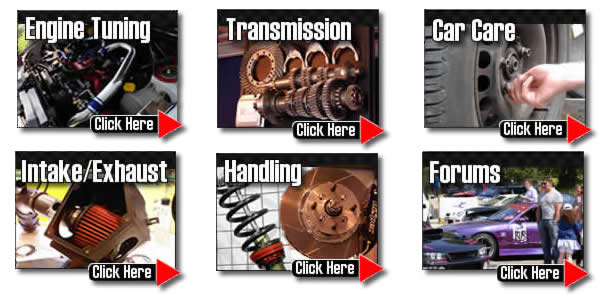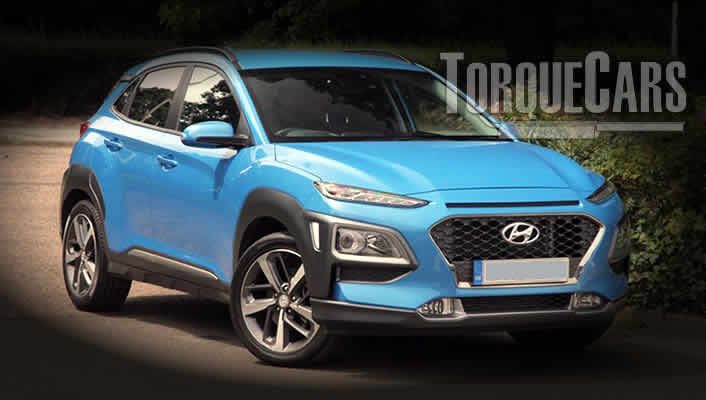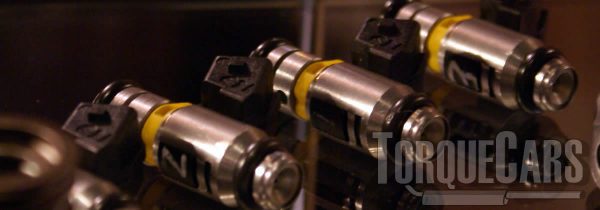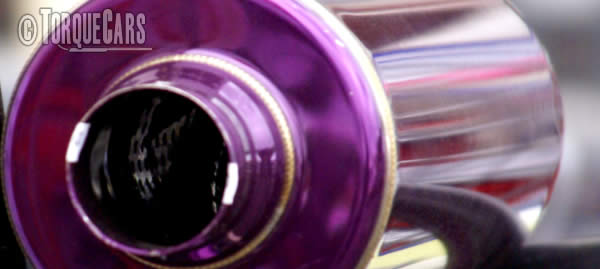Hyundai Kona Tuning
"Tuning guide to the most effective Hyundai Kona modifications."
The Kona is a brilliant project car to try. If you do your research then you can create an awesome Kona but don't be fooled there are lots of competition inspired kits out there that will simply not suit it read our unbiased guides first.
Released in 2018 the Kona fits clearly into the subcompact crossover SUV and won Utility vehicle of the year in North America in 2019. No small feat when you consider the competition in this category.
Known as the Kauai in some Portuguese speaking territories.

Handling/Suspension upgrades
Many Kona owners uprate the handling of their cars with performance suspension mods as a priority, this will certainly increase your enjoyment of the car.
Putting a tiny bit of negative camber to the front and a degree or two of toe (in for better stability or out to improve cornering), will dramatically improve your Kona in handling and cornering.
We would go to a maximum drop of 25mm - 40 mm. on most models. You risk compromising your handling if you go lower than this.
Putting meatier brake discs and better brake pads will make for radically improved stopping. (They will brake effectively over longer periods during heavy use than stock brakes will, but grip has more of a bearing on the cars ability to stop).

Please note that race brake pads can be noisier and will need a lot of heat before they bit.
In every day driving the brakes are only used rarely, therefore will not be effective so choose pads which work well in daily use.
Turning our attention to the Kona's engine we need to get a bit more power out of the top end.
Smaller engines do not provide much of a return in terms of power so start with a bigger engine. Engine swaps are a good option if you have a small engine size.
Power mods.
This list of the stages and modified modifications are usually installed by our members, decide how far you want to push your car before you begin.
Getting the correct grade of sports modifications for your planned usage of the car is essential. Stage 3 competition upgrades just won't work well on the road hard to control in slow traffic.
- 1.0 L Kappa II T-GDI i4 (petrol)
- 1.6 L Gamma II T-GDI i4 (petrol)
- 1.6 L Kappa II GDI i4 (petrol Hybrid)
- 2.0 L Nu MPI i4 (petrol)
- 1.6 L U-Line CRDi i4 (diesel)
Please watch our video which covers the 5 principles of tuning your car. Be sure to keep up with our latest YouTube content and subscribe.
Best Engine Mods for your car
- Engine Tunes - engine tuning/remapping provides the most advantage in terms of cost savings, aftermarket ECUs, and piggyback ECUs are all alternatives.
- Fast road cams are one of the most significant mechanical changes, but they must be installed by someone who knows what they're doing and they are not always easy to source but you might find a local firm to regrind a stock camshaft.
- Intake and Exhaust - Note that on their own these mods will NOT ADD POWER in most cases, but they can help enhance power after other mods by removing the restriction.
- Upgrades to turbochargers and superchargers - forced induction is the most efficient approach to increase air supply, allowing you to burn more fuel and make more power. It is one of the most costly upgrades but provides the best gains.
- Head work - The goals of porting and flowing the head are to get air flowing into the engine while removing flow restrictions and turbulence.
Typical stage 1 mods often include: Alloy wheels, Sports exhaust, Engine Tunes/Remapping, Panel air filter, Lighter flywheel, Suspension upgrade (drop 25mm - 40 mm.).
Typical stage 2 mods often include: Fast road cam, high flow fuel injector, Ported and polished head, Power/Sport clutch, fuel pump upgrades.
Typical stage 3 mods often include: Adding or upgrading forced induction (turbo/supercharger), Engine balancing, Internal engine upgrades (pistons/head/valves), Sports gearbox, Competition cam.
Peak power is good on competition cars but for a drivable and fun car you need a long torque band and perhaps extending the rev range.
The point of our articles is to give a brief overview of car tuning performance parts and point you in the right direction, our forum is where you can ask for more detailed advice and tips on your car tuning project, the best motorsport upgrades and all aspects of modding cars.A fast road cam is one of the best NASP power modifications you can do with a single part fitted to your engine.
It improves the intake and exhaust flow and increases the power if done right. Ideally you'd add other mods and finish up with a remap. We'd also caution you not to go with a competition cam as this affects the engines idling and general town driving characteristics.
When pushing up the power you will need to pay attention to the fuelling. More power needs more fuel.
Using higher octane petrol is another option if you find you are suffering from detonation or premature ignition on your Hyundai project after fitting other modified kits.  To get sufficient fuel you may need to uprate the injectors on your engine.
To get sufficient fuel you may need to uprate the injectors on your engine.
Uprate the fuel pump to cope with the extra fuel requirements of your tuned Kona's uprated injectors.
Intake and Exhaust Tuning.
Now we move on to the intake and exhaust and ensure proper flow through the engine.  Please note that WE DO NOT RECOMMEND INDUCTION KITS, unless you have tuned your car a lot and are finding that the standard air intake has become the bottleneck.
Please note that WE DO NOT RECOMMEND INDUCTION KITS, unless you have tuned your car a lot and are finding that the standard air intake has become the bottleneck.

Maximum power gains come from a full induction kit with a cold air feed on heavily tuned engines, this can be sited within an air box but a panel filter should suffice for most applications. TorqueCars suggest you use a panel air filter as these are easy to clean and maintain and generally perform better than paper ones.
Sports exhausts balance the flow of gases through the engine. But if the exhaust is too large, ie: over 2.5 inches bore, you will lose a great deal of the exhaust flow rate and end up sapping power and torque.
Getting a professionally polished and ported head with larger valves can fully release the engines power. Your clutch can seriously let you down as the power goes up if it starts to suffer and the standard clutches are only ever good for power gains of up to 46%. Fit a sports clutch to avoid power leak through the transmission. The best mods in our opinion for your Kona are fast road camshaft, remap, induction and exhaust, suspension.
NA (naturally aspirated) engines do not achieve big power gains if you tune/remap them, unless you have done extensive modifications. With turbocharged engines this is another story. A tuned/remapped turbo will give large power gains and take full advantage of the strength of the block.
We've also seen some tuners toying with twincharged conversions and making some seriously high power hikes.
Despite the large cost involved adding forced induction to a NA (naturally aspirated) engine will give large power gains. Superchargers are usually easier to add than turbos. With a turbo the boost curve is related exponentially to the engine speed making it harder to map.
The nice steady boost and rpm characteristics of the supercharger make them easier to map. To cope with forced induction you will usually need to decrease the engine compression ratio .
Alloy wheel upgrades.
The benefits of alloys include a lower unsprung weight and better brake cooling. Don't forget that your choice of rubber greatly affects your cars grip and handling. It is not worth compromising performance with cheap tyres when you can buy directional tread pattern performance tires.The drawback to large rims on your Kona is that you're changing your final drive ratio and this will have a detrimental effect on acceleration and performance.
Because of this try to keep the overall rolling diameter of the wheel your OEM settings. In all cases not going over 18 inches.
If you would like to know more, or just get some friendly advice on Tuning your car please join us in our friendly forum where you can discuss Kona options in more detail with our Kona owners. It would also be worth reading our unbiased Hyundai tuning articles to get a full grasp of the benefits and drawbacks of each modification.
Please help us improve these tips by sending us your feedback in the comments box below.
We love hearing about our website visitors projects, especially the mods done and which work best for you on your car. Which helps us keep our guides and tips up to date helping others with their modified car projects. Your feedback and comments are used to keep this page up to date, and help improve the accuracy of these articles which are kept updated and constantly revised.
If you've enjoyed this page we would be very grateful if you could share a link to it on your favourite forums or on your social media profiles, it helps us keep going.
Please Check out my YouTube channel, we're regularly adding new content...
PLEASE HELP: I NEED YOUR DONATIONS TO COVER THE COSTS OF RUNNING THIS SITE AND KEEP IT RUNNING. I do not charge you to access this website and it saves most TorqueCars readers $100's each year - but we are NON PROFIT and not even covering our costs. To keep us running PLEASE Donate here
If you liked this page please share it with your friends, drop a link to it in your favourite forum or use the bookmarking options to save it to your social media profile.
Feedback - What do You Think?
Please use our forums if you wish to ask a tuning question, and please note we do not sell parts or services, we are just an online magazine.
Help us improve, leave a suggestion or tip
Please watch this video and subscribe to my YouTube channel.
2 Responses to “Kona Tuning”

 Click to accept YouTube Cookies & Play.
Click to accept YouTube Cookies & Play.
Hi. How to soften the ride? It’s too choppy and harsh on my 2022 Kona N Line. Thank you.
Do you have a settings menu on your model if you do try to set “custom N mode” where you can adjust the suspension to “regular” and that should improve things. Also are you running large wheels? Fitting smaller wheels and higher profile tires makes a big improvement to soften the ride quality.